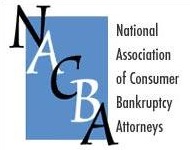Chapter 13 is often the chapter of choice when the client’s financial past includes avoidable transfers.
Most clients are intent that the news of their bankruptcy not spread and especially horrified at the prospect of a Chapter 7 trustee suing their family members to recover preferences.
At bottom, who really cares if a trustee avoids the recent payments to Capital One?
More power to him, is my chant. But sue my brother, who was so helpful with a loan when I needed it, that’s an entirely different story.
So Chapter 13 can be the work around to avoid the avoidance actions. The client pays into a plan that gives creditors what they would have gotten had the case been one under Chapter 7.
Most bankruptcy lawyers are with me so far.
The piece they seem to miss is that the measure of what creditors would have gotten in the hypothetical Chapter 7 is not the face amount of the avoidable transfer.
That’s what our Chapter 7 trustee might have sued for. That might even be what the transferee paid back to the trustee.
But it is not necessarily what would have been paid out to creditors.
Calculate transaction costs
Remember the old saying – there ain’t no such thing as a free lunch.
That certainly applies to litigation. There will be transaction costs associated with that avoidance action. The trustee’s attorney will want to be paid. There may be travel costs, or reporter fees, or search costs.
The “pot” for creditors will be consumed in part. For little preferences, those transaction costs may make suit uneconomic in the first place.
Adjust for collectability
Then consider the ability of the recipient to respond in damages: if the fraudulent transfer is one made to an aged parent who has nothing, the trustee’s hypothetical recovery is going to be nothing.
Further, the reality of preference litigation is that it invariably settles for something less than the amount prayed for.
The tussle I face is always how to quantify the shrinkage in an avoidable transfer between scheduling and the hypothetical recovery. Trustees would like to have a neat percentage to apply to the scheduled transfer. I argue that some transfers are simply so small that no one would pursue it. The $600 threshold for an avoidable transfer has remained unchanged (as to consumer debtors anyway) since the Code was adopted in 1978.
The takeaway
So, don’t take the easy way out of simply adding avoidable transfers to the liquidation analysis in their entirety. I’m sure your client would prefer to pay less.
More
Working the liquidation analysis
Image courtesy of Daniel Conway









This is a nice point, and applies equally well to determining the Best Interest dividend. Our chapter 13 Trustees want to just add up the non-exempt assets and proclaim that unsecureds should get at least that amount. I feel like a broken record explaining to them EVERY TIME that that is not what unsecured creditors receive in a hpothetical 7.
Bravo for pushing back. The attorneys who roll over for sloppy or lazy trustees just encourage bad behavior.
I have a 13 near filing and the debtor wants to pay back the $1500 she borrowed from her ex before she files. This would be a no-asset 7 except that she earns too much money so it’s a 13.
The way I see it is that the payments to the trustee will be determined by disposable income, and those payments will certainly be way more over the life of the plan than $1500 (or for that matter, $15,000 if that were the debt). Therefore there would be no reason to not pay back her ex before filing because the plan payments would be the same whether she pays him back or not.
Am I missing anything here?
No, that’s the way I see it. If the means test number drives the payments to the plan, you don’t care what the liquidation number is so long as it is less than DMI x 60.